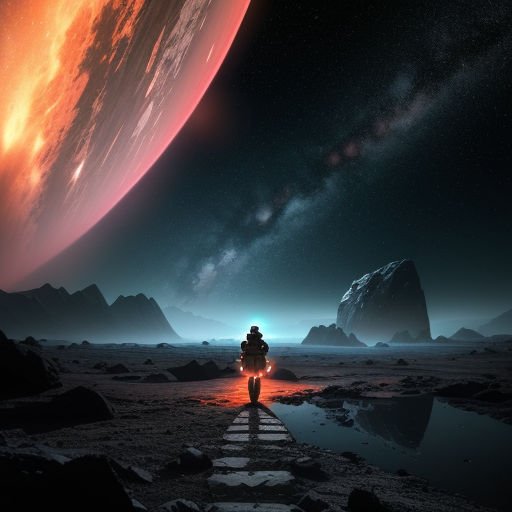Why Didn’t They Keep Those Anti-Gravity Engines Around Anyway
The Cinematic Significance of The Day the Earth Stood Still
Few films manage to blend science fiction with a powerful social message as effectively as The Day the Earth Stood Still. Released in 1951, this classic movie captivated audiences with its depiction of an alien visitation marked not by destructive conquest but by caution and hope for humanity’s future. What makes this film unforgettable is its imaginative presentation of technology — especially the intriguing concept of anti-gravity engines. These engines symbolize a pinnacle of lost technologies, captivating viewers’ imaginations about humanity’s potential to rise above earthly constraints.
The film’s influence stretches beyond entertainment, provoking reflections on how advanced technologies like anti-gravity propulsion could transform the world. This article explores the innovative ideas The Day the Earth Stood Still introduced, its lasting legacy in science fiction, and how the concept of anti-gravity engines sits at the heart of its allure.
The Day the Earth Stood Still and Its Unique Place in Sci-Fi History
Created in the midst of the Cold War, The Day the Earth Stood Still was more than just an alien visitor story. It was a parable about peace, cooperation, and the dangers of nuclear weapons. The arrival of Klaatu and his robot companion Gort invoked awe, but beyond their intimidating appearances lay a plea for humanity to unite and abandon violent conflicts.
The use of sci-fi technology, especially the spaceship powered by anti-gravity engines, helped the audience visualize these ideas more vividly. Unlike other flying saucers of the era that hovered mysteriously, Klaatu’s ship showcased an advanced propulsion system that defied gravity itself, hinting at a future where human exploration could leap beyond traditional physics.
How Anti-Gravity Engines Fueled the Story’s Impact
Anti-gravity engines were not just cool sci-fi jargon but represented an ideal — the transcendence of human limitations:
– They suggested a technology that could nullify gravitational pull, enabling effortless space travel.
– The silent, hovering motion of Klaatu’s ship fascinated viewers, differentiating it from mechanical thrusters in other films.
– This technology embodied the promise of peaceful exploration, as opposed to warlike conquest, reinforcing the film’s anti-war message.
Today, these engines continue to inspire scientists and inventors who search for new means of propulsion beyond chemical rockets.
The Science Behind Anti-Gravity Engines: Fact or Fiction?
Although anti-gravity remains a speculative field in real-world physics, The Day the Earth Stood Still sparked early public interest in the possibility of overcoming gravity. At its core, anti-gravity technology aims to reverse or neutralize gravitational forces, allowing objects to float or move without traditional energy constraints.
Existing Concepts Related to Anti-Gravity
– **Magnetic Levitation (Maglev):** Utilizes magnetic fields to levitate trains above tracks, reducing friction.
– **Electrogravitics:** A fringe field of study exploring electrical fields’ ability to influence gravity, often debated among enthusiasts.
– **Inertia Modification:** Some theories propose altering inertia to reduce gravitational effects, though this is highly theoretical.
None of these methods have achieved true anti-gravity, but they demonstrate the ongoing fascination with altering gravitational constraints.
The Day the Earth Stood Still’s Vision versus Modern Science
In the movie, Klaatu’s ship effortlessly defies gravity, moving silently and without visible means of propulsion—a visual marvel. While current science hasn’t confirmed anti-gravity engines, the film’s portrayal aligns with a hopeful view of future technology breaking physical laws.
This imaginative leap mirrors humanity’s broader trajectory in science fiction: using speculative technology to explore profound ethical and existential questions.
Lost Technologies in Science Fiction and Their Real-World Inspirations
The Day the Earth Stood Still is a classic example of science fiction introducing “lost technologies” — advanced inventions mankind either forgot or has yet to achieve. These narratives challenge audiences to rethink the boundaries of scientific possibility.
What Qualifies as a Lost Technology?
– Technologies described in myths or ancient texts whose principles remain undiscovered.
– Hypothetical technologies imagined by science fiction, like anti-gravity drives or faster-than-light travel.
– Innovations ahead of their time, forgotten due to lack of practical application or knowledge.
Anti-gravity engines fit squarely into this category, representing a tantalizing idea on the edge of science and imagination.
Examples of Lost Technologies in Other Sci-Fi Works
– The warp drive in Star Trek, enabling faster-than-light travel.
– Tesla’s rumored wireless energy transmission devices, blending historical fact with speculative fiction.
– The “centrifugal force” generator in classic pulp sci-fi, an early nod to manipulating physical forces.
These stories enrich our collective curiosity about what might exist beyond current understanding.
Behind the Scenes: How The Day the Earth Stood Still Created Its Iconic Anti-Gravity Effects
The practical effects team working on the film had to invent novel techniques to portray Klaatu’s advanced ship and its anti-gravity capabilities visually. This ingenuity helped the science fiction concept resonate strongly with viewers.
Special Effects Innovations
– **Quiet Hovering:** The filmmakers minimized engine sounds, enhancing the silent, mysterious nature of the ship’s anti-gravity propulsion.
– **Sleek Design:** The saucer’s smooth, unbroken shape symbolized technological sophistication, unlike clunky spacecraft seen in contemporaneous films.
– **Practical Effects:** Innovative use of wires, lighting, and miniatures brought the anti-gravity concept to life on screen.
These practical choices contributed to the lasting impression that The Day the Earth Stood Still left on audiences and future filmmakers.
Actor Perspectives on the Technology
Michael Rennie, who played Klaatu, often remarked on how the film’s futuristic technology captivated viewers, making the alien visitor believable not merely through script but through the tangible sense of scientific possibility.
Why Anti-Gravity Engines Still Captivate Modern Audiences
More than seven decades after its release, The Day the Earth Stood Still endures as a cultural touchstone — and much of that is thanks to its early embrace of technologies like anti-gravity engines that spark wonder.
The Ongoing Allure of Anti-Gravity in Popular Culture
– They represent freedom — the idea of breaking earthly bonds and soaring beyond limits.
– Anti-gravity remains a symbol of peaceful progress rather than destructive power, as highlighted in the film.
– This concept keeps scientists and engineers motivated to explore unconventional propulsion ideas.
Inspiration for Future Technologies
Researchers in aerospace and physics fields still draw inspiration from such fictional depictions to push boundaries. The film’s vision complements efforts toward:
– Developing efficient space travel alternatives.
– Creating drones or vehicles capable of silent, hovering flight.
– Advancing energy-efficient propulsion systems.
Films like The Day the Earth Stood Still thus are part of an unbroken chain motivating innovation.
Rediscovering the Promise of Lost Technologies like Anti-Gravity Engines
The Day the Earth Stood Still invites us to reconsider technologies long relegated to myth or fiction and to imagine their potential reality. Anti-gravity engines symbolize not just science fictional gadgetry but a hope that humanity might one day master forces once beyond reach.
Embracing these ideas expands our vision for future exploration and encourages ethical reflections on technological power. As theories in physics evolve and engineering advances, the day may come when lost technologies like anti-gravity propulsion are rediscovered and realized.
Whether layered within thrilling narratives or scientific ambitions, the legacy of the film and its focus on anti-gravity engines challenges us to push imagination and innovation further than ever before.
Explore more about sci-fi influences on technology development at NASA’s official page on advanced propulsion research: https://www.nasa.gov/centers/glenn/about/fs21grc.html
Remember, understanding our cultural and scientific past inspires breakthroughs in our present and future. Don’t miss out on revisiting these classic inspirations that still fuel creativity today.
Let The Day the Earth Stood Still remind you that what seems lost may simply be waiting for rediscovery — and that the anti-gravity engines of fiction could someday become realities in our skies.














Post Comment